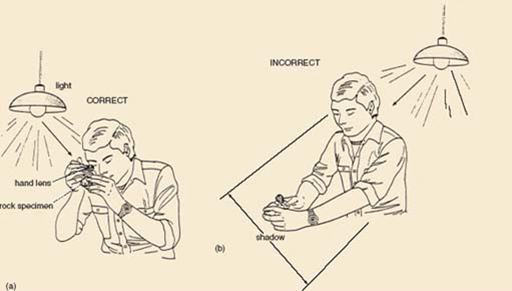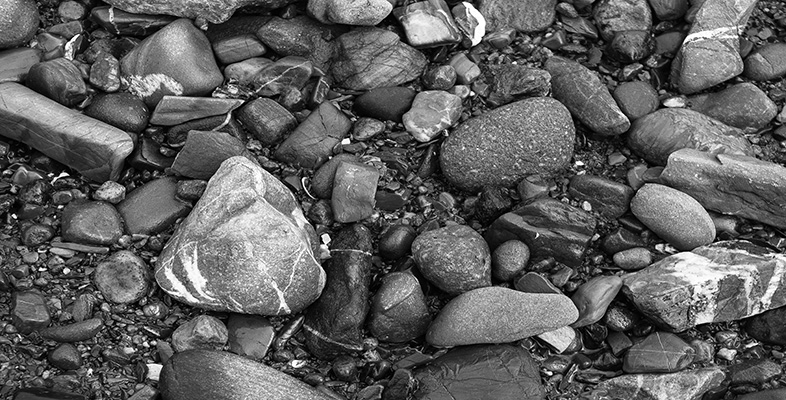1.2.2 Rocks
Any naturally formed solid assemblage of mineral grains can be described as a rock. The mineral grains may be fragments of crystals or intact crystals and their size can range from a few micrometres (1 micrometre = 10−6m) to a few centimetres. A rock may consist of one type of mineral but more usually it consists of several minerals. Rocks can be classified according to the way in which the grains are arranged, although the identity of the minerals present (for example, the rock limestone is made mostly of calcite), the proportions of particular minerals, and the dominant size of mineral grains are also important. The shape of the grains in a rock, their size and the relationship between them (for example, whether or not the grains interlock with each other to form a mosaic) define the texture of a rock, and reflect the processes that formed it. A rock's texture has nothing to do with how the rock feels when you touch it. To ‘read the rocks’ and discover how any particular rock formed, we investigate its texture and work backwards to deduce the processes by which that texture was produced.
Because the mineral grains in most rocks are quite small it is often best to use a hand lens, typically with a magnification power of times 10, to get a clearer view. You may already have access to a small hand lens. If so, some notes on this are given in Box 1, Using the hand lens.
Box 1 Using the hand lens
The correct way to examine objects with a hand lens is shown in Figure 2. Some additional hints are:
Hold the hand lens 2–3 cm from your eye and bring the object up towards the lens until it is in focus.
Make sure the surface of the object is well lit from the side.
Keep the hand lens and the object parallel to each other and hold both steady.
With rough surfaces you have to move the object back and forth to bring different parts into focus.

Rocks may be classified into three types, according to the three processes that form rocks:
Igneous rocks: these are formed from molten rock (magma) that becomes solid when it cools, either deep underground or after a volcanic eruption at the surface.
Sedimentary rocks: these are formed when eroded particles of pre-existing rocks (in other words sediment, such as sand on a beach or mud on the sea-bed) have been laid down in layers at the surface of the Earth and turned into solid rock by being buried and compacted under more layers of sediment.
Metamorphic rocks: these are existing rocks that have ‘changed form’ by the action of high pressure or temperature causing new crystals to grow, for example after burial deep in the Earth.
Sections 1.4 to 1.6 describe how each of the three major rock types is formed and how their modes of formation can be deduced from the textures and other features visible in the rocks themselves – reading the rocks.
